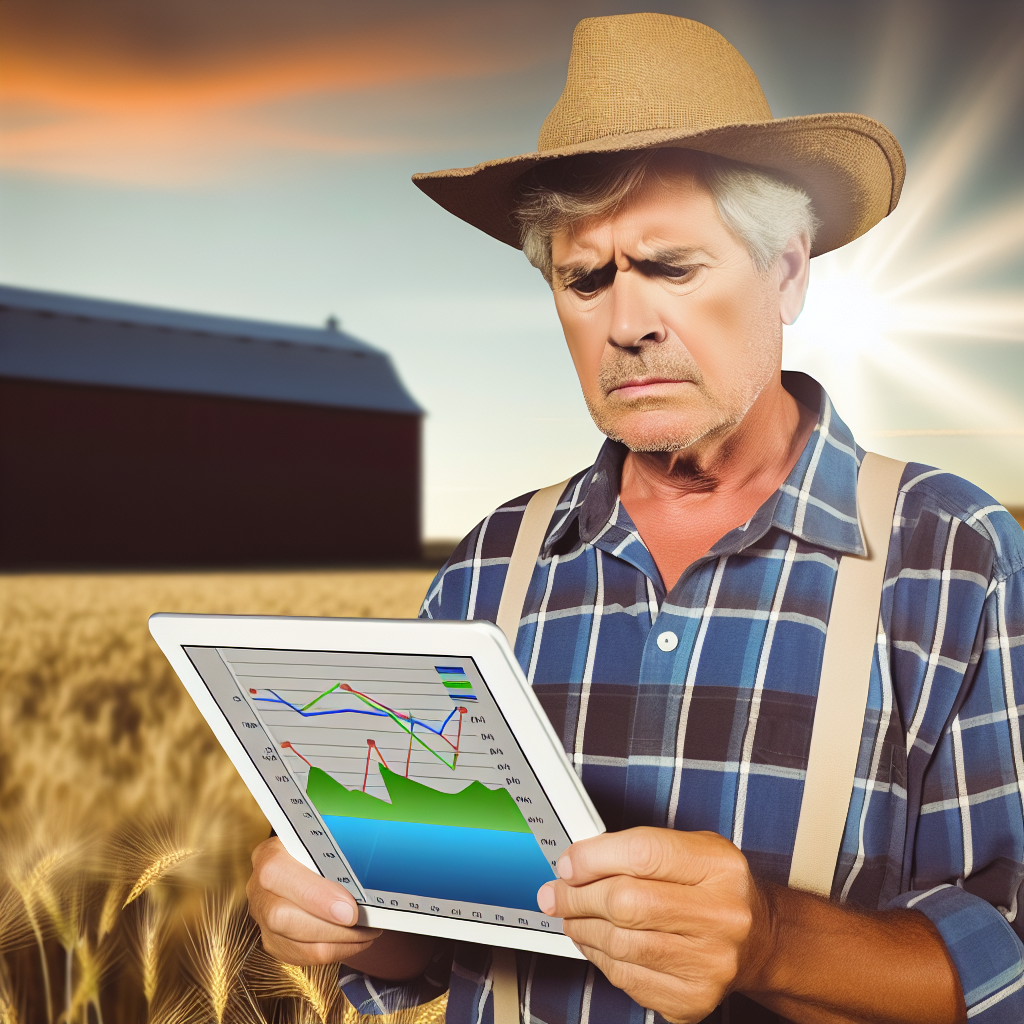Understanding the Basics of Commodity Price Fluctuations
What Are Commodity Prices?
Commodity prices refer to the value of raw materials in global markets.
These materials include agricultural products, metals, and energy sources.
Price variations can arise due to supply and demand dynamics.
Factors Influencing Commodity Prices
Several factors impact commodity prices significantly.
Weather patterns affect agricultural yields and, hence, prices.
Moreover, geopolitical events can disrupt supply chains globally.
Economic indicators, such as inflation, also play a crucial role.
Additionally, technological advancements influence production efficiency.
The Role of Market Speculation
Speculation is a driving force behind commodity price fluctuations.
Traders often buy and sell based on anticipated price movements.
These activities can create volatility in the markets.
As a result, prices may not reflect the actual supply and demand.
Understanding Price Indices
Price indices provide a snapshot of commodity price trends over time.
Charts display how prices change in response to various factors.
They aid farmers in making informed decisions regarding planting and harvesting.
Transform Your Agribusiness
Unlock your farm's potential with expert advice tailored to your needs. Get actionable steps that drive real results.
Get StartedImpact on Farming
Commodity price fluctuations have direct implications for farmers.
High prices can lead to greater profits, encouraging more production.
Conversely, falling prices can result in financial strain.
Farmers must adapt their strategies to remain viable.
Strategies for Navigating Price Fluctuations
Farmers can employ several strategies to manage price risks.
- Diversifying crops helps spread risk across different commodities.
- Utilizing futures contracts can lock in prices for future sales.
- Building relationships with buyers may provide more stable pricing.
- Staying informed about market trends allows for timely decisions.
The Impact of Global Market Trends on Commodity Prices
Understanding Global Influences
Global markets significantly impact commodity prices.
Factors such as supply and demand fluctuations play a crucial role.
Additionally, geopolitical events can lead to sudden price changes.
For example, conflicts in key production regions often disrupt supply.
Consequently, prices tend to rise due to limited availability.
Commodity Exchange Dynamics
Commodity exchanges act as platforms for trading various goods.
Traders react to market news, influencing prices in real-time.
When reports of a poor harvest emerge, speculation can drive prices higher.
Conversely, forecasts indicating surplus production may lower prices.
Currency Fluctuations and Their Effects
Currencies impact international trade and commodity pricing.
For instance, a stronger dollar can make U.S. commodities more expensive abroad.
This scenario often results in decreased demand from international buyers.
As a result, prices may fall to maintain competitive edge in the market.
The Role of Technology and Information
Advancements in technology provide farmers with valuable insights.
Real-time data on weather and market trends helps farmers make informed decisions.
Moreover, social media has changed how information spreads in the agricultural sector.
Farmers can respond more quickly to market changes due to increased accessibility.
Global Economic Conditions
The state of the global economy influences commodity prices profoundly.
Economic growth in large markets typically boosts demand for agricultural products.
Showcase Your Farming Business
Publish your professional farming services profile on our blog for a one-time fee of $200 and reach a dedicated audience of farmers and agribusiness owners.
Publish Your ProfileIn contrast, recessions can lead to reduced consumption and lower prices.
Therefore, farmers must stay alert to global economic trends.
Key Factors Influencing Commodity Prices in Agriculture
Supply and Demand Dynamics
Commodity prices fluctuate primarily due to supply and demand forces.
When supply exceeds demand, prices tend to decrease.
Conversely, when demand outpaces supply, prices increase.
Additionally, seasonal changes can impact crop availability.
Global Economic Conditions
The global economy significantly affects agricultural commodity prices.
Economic growth in emerging markets often boosts demand for food products.
Thus, stronger economies can lead to increased commodity prices.
Weather and Climate Factors
Unpredictable weather patterns greatly influence agricultural yields.
Droughts can reduce crop yields, leading to higher prices.
Heavy rainfall can also cause flooding and crop damage.
Farmers must adapt to changing climatic conditions to sustain production.
Technological Advances
Advancements in farming technologies can enhance productivity.
Better seed varieties can resist pests and withstand harsh conditions.
When production increases due to technology, prices may stabilize or drop.
Government Policies and Trade Agreements
Government policies play a crucial role in shaping market conditions.
Subsidies can help stabilize prices, benefiting farmers directly.
Trade agreements also influence the flow of commodities across borders.
Market Speculation
Speculation in commodity markets can lead to price volatility.
Traders often react to news and forecast reports, causing rapid changes.
Thus, market sentiment can drive prices up or down unexpectedly.
Consumer Preferences
Shifting consumer preferences also impact agricultural commodity prices.
For example, the rise in demand for organic products can change the market.
Farmers must adjust their production methods to meet these demands.
As a result, this can lead to variations in pricing structures.
Learn More: How Vertical Farming Is Disrupting Traditional Agribusiness Models
Strategies for Farmers to Mitigate Price Risks
Diversifying Crop Selection
Diversifying crop selection helps reduce financial risk.
This strategy spreads the risk across different markets.
Farmers can choose complementary crops to maximize yield.
Additionally, this increases the chance of profitable sales.
Understanding local market demands is essential for this strategy.
Implementing Hedging Techniques
Farmers can implement hedging techniques to stabilize income.
Options and futures contracts provide price certainty.
For example, a farmer can lock in a price for their grain.
By doing this, they mitigate the impact of price drops.
Learning about risk management tools is vital for successful hedging.
Utilizing Market Forecasting Tools
Market forecasting tools aid in informed decision-making.
Farmers can analyze historical data to anticipate price changes.
Using these tools allows farmers to plan crop planting and sales.
Showcase Your Farming Business
Publish your professional farming services profile on our blog for a one-time fee of $200 and reach a dedicated audience of farmers and agribusiness owners.
Publish Your ProfileAdditionally, staying updated on market trends is crucial.
Farmers should consider subscribing to agricultural market reports.
Building Strong Relationships with Buyers
Strong relationships with buyers create consistency in sales.
Negotiating long-term contracts can stabilize income.
This approach reduces uncertainty and boosts confidence.
Farmers should engage in open communication with buyers.
Building trust encourages better prices and terms.
Investing in Risk Management Insurance
Risk management insurance protects against unexpected losses.
Policies can cover crop failures or low commodity prices.
Farmers should evaluate different insurance options carefully.
Tailoring insurance to specific needs helps maximize benefits.
Consulting with insurance agents can provide valuable insights.
Gain More Insights: How to Scale Your Agribusiness for Maximum Revenue
The Role of Futures Contracts and Hedging in Farming
Understanding Futures Contracts
Futures contracts play a vital role in managing agricultural risk.
Farmers can lock in prices for their crops ahead of time.
This strategy helps mitigate losses due to price fluctuations.
Consequently, it provides a safeguard against market volatility.
Moreover, futures contracts are standardized agreements.
These contracts are traded on established exchanges.
Each contract specifies the quantity and quality of the commodity.
Additionally, the delivery date is predetermined in the contract.
The Benefits of Hedging
Hedging serves as a crucial risk management tool for farmers.
By using hedging strategies, farmers can protect their profit margins.
This approach can stabilize income during unpredictable market shifts.
For example, a farmer may sell futures contracts.
They can do this even before planting, providing financial security.
Additionally, hedging allows farmers to focus on production.
It reduces the stress associated with fluctuating prices.
As a result, farmers can make more informed business decisions.
Strategies for Effective Hedging
Implementing effective hedging strategies is essential for success.
Farmers should regularly analyze market conditions.
This analysis enables them to adjust their strategies accordingly.
Moreover, they can use a combination of options and futures.
This diversification reduces overall risk exposure.
Some farmers may choose to work closely with financial advisors.
These experts provide guidance on using hedging effectively.
Case Studies of Successful Hedging
Many farmers have successfully utilized hedging strategies.
For instance, Robert Mason, a corn farmer, implemented futures contracts.
He secured prices several months before harvest, minimizing losses.
Similarly, a group of soybean farmers banded together for joint hedging.
Showcase Your Farming Business
Publish your professional farming services profile on our blog for a one-time fee of $200 and reach a dedicated audience of farmers and agribusiness owners.
Publish Your ProfileThis collective approach maximized their market advantage.
Challenges in Futures and Hedging
Although hedging offers many benefits, challenges exist.
Market volatility can lead to unexpected outcomes.
Farmers must be aware of the costs associated with hedging.
Additionally, proper education and resources are essential.
Investing time to understand financial instruments is critical.
Moreover, inexperienced farmers may face difficulties.
They should seek training or guidance before entering contracts.
Learn More: Proven Agribusiness Strategies for Maximum Profit

Analyzing Historical Price Data for Better Decision Making
Importance of Historical Data
Understanding historical price data shapes effective farming strategies.
This data helps farmers predict future market trends.
Consequently, it enables timely planting and harvesting decisions.
Collecting Relevant Data
Farmers can gather price data from multiple sources.
Online databases offer comprehensive historical price information.
Additionally, agricultural extension services provide local insights.
Tools for Analysis
Various tools enhance the analysis of price data.
Spreadsheet software allows for easy data manipulation.
Analytical software improves data visualization and interpretation.
Identifying Patterns and Trends
Analyzing historical data reveals significant patterns over time.
Farmers should look for seasonal price fluctuations.
Understanding these trends informs planting schedules and crop choices.
Case Studies and Practical Examples
Case studies illustrate successful price data utilization.
For instance, the Rivera family used price trends to plan their crop rotations.
As a result, they increased profitability by 20% in one year.
Combining Data with Market Insights
Combining historical data with current market insights enhances decision-making.
Farmers should stay updated on market news and forecasts.
Integrating both data types leads to more informed strategies.
You Might Also Like: Maximizing Profit: Selling Your Farm Land Wisely
Adapting Crop Selection Based on Price Predictions
Understanding Price Trends
Price trends determine which crops farmers should prioritize each season.
Analyzing historical data helps in predicting future price fluctuations.
Utilizing tools like USDA reports can provide valuable insights.
Moreover, using market analysis can help track commodity shifts.
Evaluating Local Markets
Farmers should assess local market demands regularly.
Local preferences can differ significantly from national trends.
Engaging with local buyers establishes reliable sales channels.
Ultimately, adapting to community needs can enhance profitability.
Choosing the Right Crops
Crop selection must align with both market predictions and local conditions.
Crops with high demand can yield better profits.
Examples include organic vegetables and specialty grains.
Additionally, diversifying crops minimizes risks associated with price drops.
Showcase Your Farming Business
Publish your professional farming services profile on our blog for a one-time fee of $200 and reach a dedicated audience of farmers and agribusiness owners.
Publish Your ProfileImplementing Sustainable Practices
Sustainable practices can enhance crop viability in fluctuating markets.
Investing in soil health leads to stronger crop yields.
Moreover, sustainable farming can appeal to eco-conscious consumers.
Monitoring and Adjusting Strategies
Continuous monitoring of price changes is crucial for success.
Farmers should be ready to pivot based on market conditions.
Using technology can streamline this process effectively.
Regularly reviewing strategies with agricultural advisors enhances decision-making.
Utilizing Technology and Market Analysis Tools for Price Forecasting
The Importance of Price Forecasting
Price forecasting plays a crucial role in the farming industry.
Farmers depend on accurate predictions to plan their operations wisely.
Effective forecasting helps mitigate the risk of market volatility.
It allows producers to make informed decisions on crop planting and harvesting.
Additionally, it supports better financial planning and resource allocation.
Leveraging Technology for Forecasting
Tech innovations revolutionize how farmers approach price forecasting.
Data analytics tools process large datasets rapidly.
Farmers can use these tools to analyze historical price trends.
Moreover, machine learning algorithms improve forecasting accuracy.
These technologies simplify complex data into actionable insights.
Market Analysis Tools Overview
Several market analysis tools are available to farmers today.
- Commodity price tracking websites provide real-time updates.
- Mobile applications let farmers monitor market fluctuations easily.
- Subscriptions to agricultural market reports deliver valuable insights.
Each tool serves a unique purpose in price forecasting.
Farmers can choose the right combination for their needs.
Collaboration with Agricultural Economists
Working with agricultural economists enhances forecasting efforts.
These experts provide valuable perspectives on market trends.
They analyze external factors that influence commodity prices.
Such collaboration results in more robust forecasting models.
Real-World Examples of Successful Forecasting
Many farmers have benefited from effective price forecasting strategies.
Emma Johnson, a corn farmer, utilizes data analytics extensively.
Her forecasts allowed her to choose optimal planting times last season.
Similarly, Greenfield Farms successfully leveraged market reports to maximize profits.
These examples highlight the tangible advantages of accurate forecasting.




